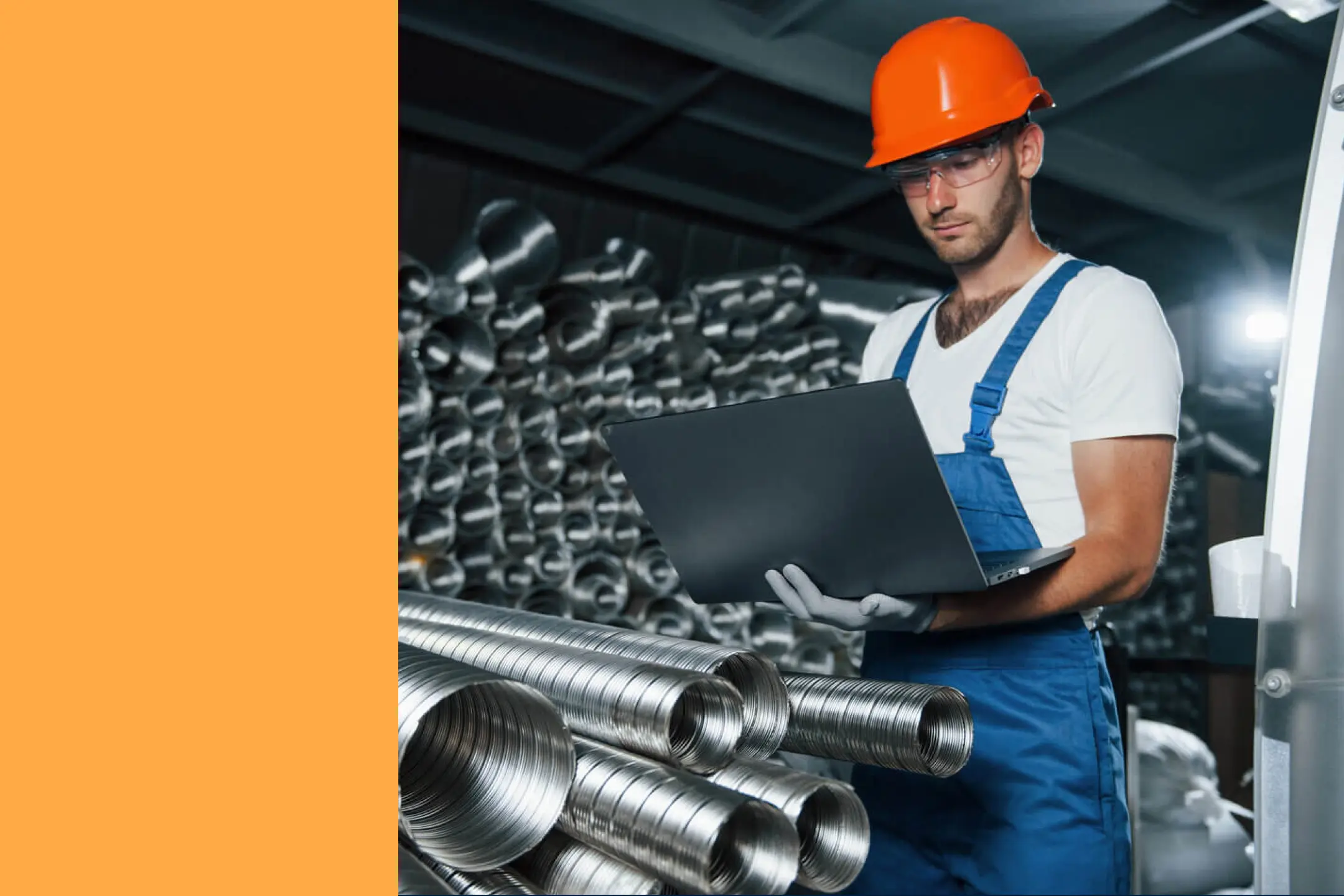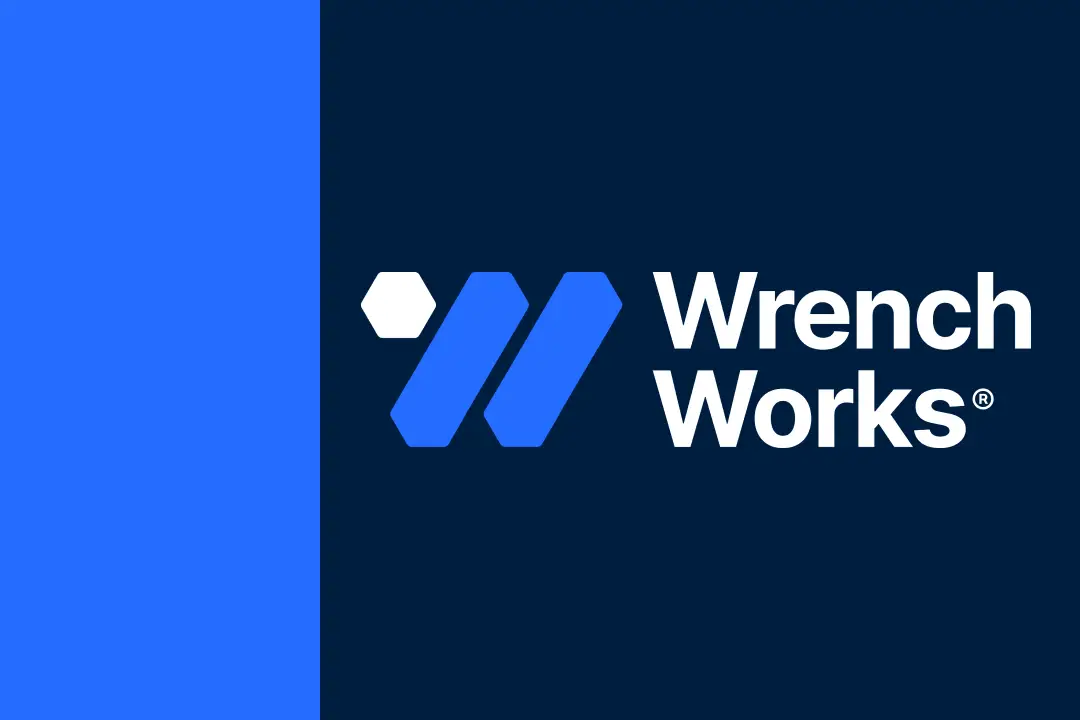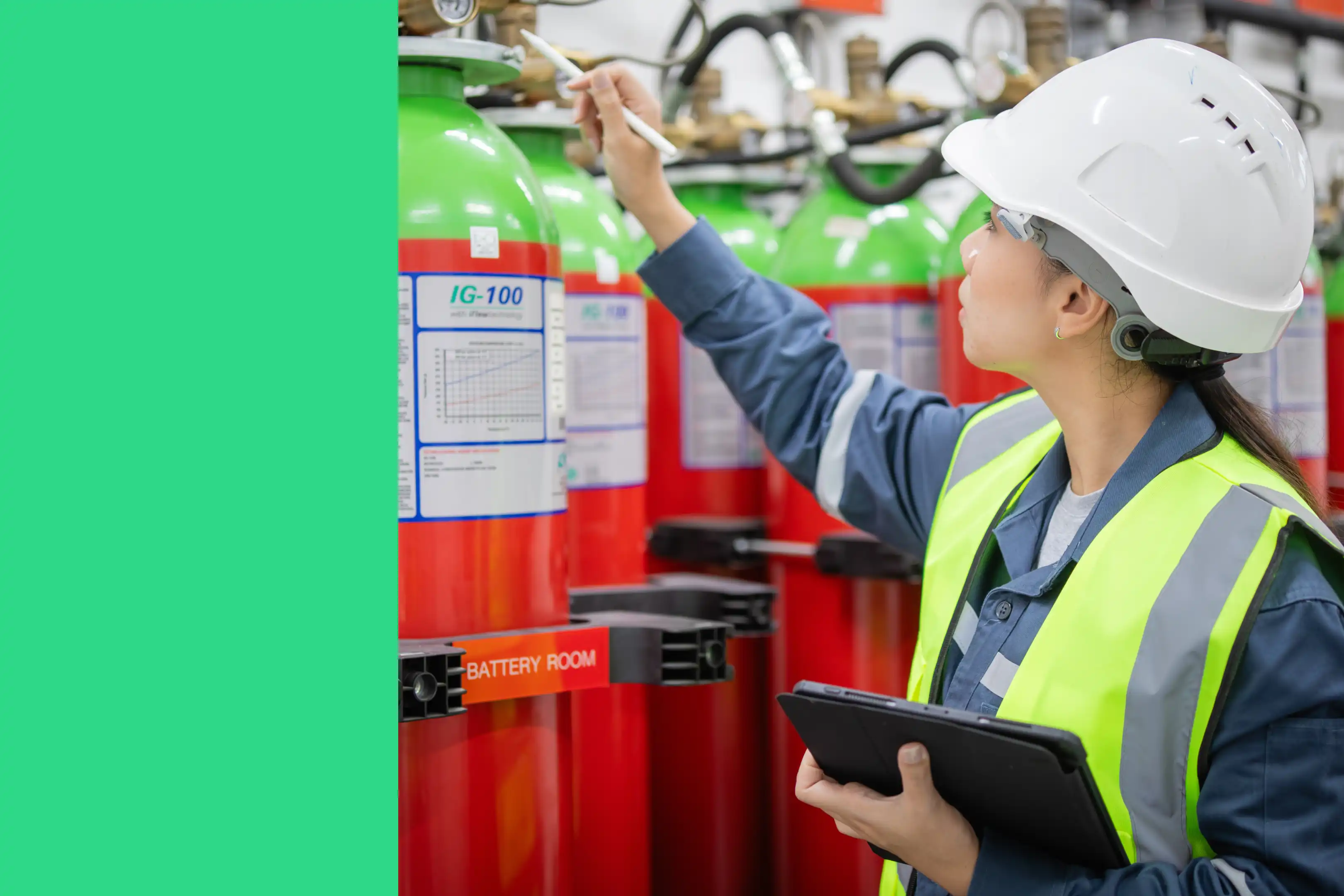
Predictive maintenance (PdM) uses real-time sensor data, historical data, and machine learning to predict equipment failure and trigger precise maintenance interventions. Done well, PdM reduces unplanned downtime, extends the lifespan of equipment, and optimizes maintenance schedules and labor costs, especially for critical assets in manufacturing.
PdM relies on technologies like vibration analysis, infrared thermography, ultrasound, oil analysis, and motor circuit analysis. When integrated with your CMMS, the data from this tech allows you to schedule work automatically when the early signs of failure are detected.
This article dives into 18 real-world predictive maintenance examples so you can see how PdM works, how it benefits maintenance teams, and how you can start implementing predictive maintenance at your facility.
Key takeaways
- Predictive maintenance is most valuable on critical equipment with predictable failure modes and signals that can be detected by sensors.
- Start small with your predictive maintenance program. Begin with one asset class, one line, or one failure mode, then scale.
- Tie every alert to a clear action, like a follow-up work order with a spare parts list, and a KPI (MTBF, MTTR, false positives).
- Use a CMMS to trigger alerts, create work orders, and track results. This is how you convert signals into action that increases uptime.
- Blend predictive and preventive maintenance to cover safety and compliance while trimming unnecessary maintenance costs.
What is predictive maintenance and how is it different from preventive maintenance?
Predictive maintenance predicts potential equipment failures so you only schedule maintenance when the data shows it’s needed to prevent unplanned downtime. These failure signals are commonly found using IoT sensors, real-time data, and analytics.
Preventive maintenance, on the other hand, follows a fixed maintenance schedule regardless of condition, whether through time or usage-based triggers.
Most high-performing plants use both: preventive maintenance for tasks with low to mid criticality and compliance/safety tasks, and PdM for condition-based, just-in-time repairs on highly critical equipment. This allows teams to minimize downtime and optimize maintenance schedules.
The predictive maintenance process
- Select assets: Choose equipment suited for predictive maintenance by examining criticality, failure history, and the cost of downtime.
- Create a failure mode and effects analysis (FMEA): Document what fails, how it fails, and its impact on all aspects of your operation.
- Choose the right instrument to forecast failure: This can include meters and sensors that measure vibration, temperature, current, pressure, or oil quality.
- Sync equipment data with your maintenance system: Make sure data is flowing to your maintenance management system and that it is triggering corrective maintenance based on pre-set rules, learned performance, and historical thresholds.
- Trigger actions via your CMMS: Automatically create and schedule work orders based on alerts that point your toward possible failure.
- Review outcomes and retrain models: Analyze your KPIs, like MTBF, MTTR, and alert precision. Then adjust your machine learning models, thresholds, and sensor alerts to ensure there are no false alarms or triggers that happened too late.
17 predictive maintenance examples
The predictive maintenance examples below will help you understand what is possible with predictive maintenance, as well as the steps necessary to implement it, including the sensor or tech involved, the signal that identifies signs of failure, and the action to be taken to ensure your predictive maintenance program is effective.
1. General manufacturing: CNC machine spindle
Measurement: Vibration analysis on spindle bearings
Trigger: Rising vibration amplitude or frequency shift
Insight: Indicates bearing wear, imbalance, or misalignment
Action: Schedule bearing inspection and lubrication during next planned stop
2. General manufacturing: Conveyor system
Measurement: Acoustic or vibration data on conveyor rollers
Trigger: Increase in noise or uneven vibration signature
Insight: Suggests misalignment, worn rollers, or belt tension issues
Action: Adjust alignment or replace worn components before belt failure
3. Food and beverage manufacturing: Refrigeration compressor
Measurement: Pressure and temperature sensors on the refrigerant circuit
Trigger: Gradual rise in discharge pressure or temperature
Insight: Possible refrigerant leak, dirty condenser coil, or impending compressor strain
Action: Inspect for leaks, clean coils, or service compressor to maintain cooling performance
4. Oil and gas: Pipeline pump
Measurement: Vibration and flow rate on pump housing
Trigger: Irregular flow rate or high-frequency vibration peaks
Insight: Early signs of cavitation, bearing wear, or valve issues
Action: Inspect pump impellers, bearings, and valves before throughput drops
5. Oil and gas: Transmission pipeline
Measurement: Ultrasonic wall thickness monitoring
Trigger: Localized wall thinning or corrosion rate increase
Insight: Progressive internal corrosion or coating failure
Action: Schedule targeted inspection and repair to prevent leaks
6. Power generation: Gas turbine
Measurement: Vibration and exhaust temperature sensors on turbine shaft
Trigger: Imbalance in vibration phase or temperature spread
Insight: Rotor misalignment, blade wear, or unbalanced combustion pattern
Action: Conduct borescope inspection or balancing before shutdown
7. Utilities: Power transformer
Measurement: Dissolved gas analysis in transformer oil
Trigger: Rising hydrogen or acetylene gas levels
Insight: Thermal or electrical insulation degradation
Action: Plan oil filtration, insulation test, or component replacement
8. Facilities management: HVAC system
Measurement: Temperature differential and current draw on compressor and fans
Trigger: Decreasing delta-T or rising energy consumption
Insight: Dirty coils, clogged filters, or fan motor wear
Action: Clean coils, replace filters, and inspect fan bearings
9. Pharmaceuticals: Steam sterilizer (Autoclave)
Measurement: Steam pressure and temperature sensors
Trigger: Cycle time drift or unstable temperature readings
Insight: Faulty pressure valve or temperature sensor calibration issues
Action: Calibrate sensors, inspect valves, and verify sterilization control logic
10. Mining: Conveyor belts
Measurement: Acoustic emission and tension sensors along belt drives
Trigger: Abnormal noise or tension deviation
Insight: Misalignment, splice damage, or roller failure
Action: Realign belt, replace rollers, or schedule belt repair
11. Aerospace: Jet engine
Measurement: Vibration and exhaust gas temperature (EGT) sensors
Trigger: Increasing vibration levels or uneven EGT across cylinders
Insight: Bearing fatigue, fan imbalance, or combustion inefficiency
Action: Schedule engine inspection or overhaul during next planned maintenance window
12. Fleet management: Heavy trucks
Measurement: Telematics data from engine and brake systems
Trigger: Diagnostic trouble codes (DTCs) or brake temperature spikes
Insight: Imminent brake wear, oil degradation, or sensor malfunction
Action: Prioritize vehicle for service before component failure or downtime
13. Healthcare: MRI cooling system
Measurement: Coolant flow and compressor temperature
Trigger: Gradual temperature rise or reduced coolant flow rate
Insight: Pump degradation or coolant leak
Action: Refill or replace coolant and inspect compressor before system shutdown
14. Water utilities: Pump motors
Measurement: Motor current and insulation resistance
Trigger: Increasing current draw or declining insulation readings
Insight: Bearing friction, winding degradation, or electrical imbalance
Action: Schedule motor maintenance or rewinding before failure
15. Construction: Hydraulic excavator
Measurement: Hydraulic fluid pressure and contamination level
Trigger: Drop in pressure or increase in particulate count
Insight: Worn seals, clogged filters, or internal leakage
Action: Replace seals and filters; analyze fluid sample for wear trends
16. Renewable energy: Wind turbine gearbox
Measurement: Vibration and oil particle analysis
Trigger: Rise in vibration amplitude or metal particle count
Insight: Early-stage gear or bearing wear
Action: Plan gearbox inspection or oil change to prevent major failure
17. Chemical processing: Heat exchanger
Measurement: Temperature and pressure differentials across exchanger surfaces
Trigger: Declining heat transfer efficiency or increased pressure drop
Insight: Fouling, scaling, or tube blockage
Action: Schedule cleaning or chemical treatment to restore efficiency
Predictive maintenance technologies: What to use and when
- Vibration analysis: rotating assets (motors, pumps, gearboxes).
- Infrared thermography: electrical systems and bearings.
- Ultrasound: compressed air/steam leaks, lubrication quality.
- Oil analysis: hydraulics, gearboxes, engines.
- Motor current analysis: early detection of electrical faults.
- Machine learning and anomaly detection: fuses multi-sensor data to predict equipment failures more accurately as historical data accumulates.
Predictive maintenance vs. preventive maintenance: When to use which maintenance strategy
Both predictive and preventive maintenance aim to prevent equipment failure, but they do so in different ways.
Preventive maintenance relies on time- or usage-based intervals (for example, every 1,000 hours or every six months). Predictive maintenance relies on condition-based triggers, using data to determine when a component will be failing in the future.
The question isn’t which is better overall, it’s which is better for each asset, based on its criticality, failure behavior, and monitoring potential.
How to choose between strategies
- Start with criticality: Use preventive maintenance for low-risk or regulatory assets where failure impact is minor or predictable. Use predictive maintenance for critical assets where downtime is costly or data is available.
- Assess data visibility: If you can’t easily measure a signal of deterioration (like wear, temperature, vibration), preventive maintenance may be more practical.
- Consider cost vs. risk: PdM often requires higher upfront investment in sensors and analytics, justified only when the potential savings from avoided downtime outweigh that cost.
- Blend strategically: Most modern maintenance programs use a hybrid approach: preventive for compliance and safety, predictive for high-value assets.
Implementation playbook: A 90-day roadmap for setting up predictive maintenance
Phase 1: Prove value on one asset class (weeks 1–4)
- Pick a critical asset (ex. plant air compressors).
- Define failure modes and map to signals.
- Install sensors and define alert thresholds. Start with vendor guidelines, then fine-tune.
- Create corrective work order triggers and templates for when failure is detected.
Phase 2: Automate the loop (Weeks 5–8)
- Stream sensor data to your PdM model.
- Auto-create work orders on validated alerts.
- Track MTBF, MTTR, false-positive rate, labor hours, and parts used.
Phase 3: Scale and govern (Weeks 9–12)
- Expand to a second line or asset family.
- Add spare-parts forecasting and condition-based inventory.
- Stand up a data quality board to review alert performance and retrain machine learning models quarterly.
Metrics that prove predictive maintenance is working
- Reliability metrics: This includes increased mean time between failure (MTBF) and decreased failure rate.
- Maintainability KPIs: You should keep tabs on mean time to repair (MTTR) to ensure it’s decreasing, as well as planned maintenance percentage (which should be going up).
- Operational measurements: Metrics like overall equipment effectiveness (OEE) and planned maintenance compliance should be increasing, while false positives and data errors should be decreasing.
- Cost: Emergency labor and parts costs should be decreasing.
The final word: The benefits of predictive maintenance extend far beyond the plant floor
Predictive maintenance is not a disciplined way to predict equipment failures and act before they occur. If the predictive maintenance examples in this article can teach us anything, it’s that focusing on identifying failure modes for critical assets can have a profound impact not just on uptime and costs, but on the success of a company beyond the plant floor. If you can start small, prove the ROI of predictive maintenance, and scale across lines, plants, and fleets, it’ll help you boost equipment reliability and operational efficiency.
Predictive Maintenance FAQs
What tools are used in predictive maintenance?
Common tools include vibration analyzers, thermal cameras, oil sampling kits, ultrasonic detectors, and acoustic emission sensors. These devices collect data and transmit it to CMMS software, which applies algorithms to identify trends and potential failures. When readings exceed preset thresholds, the system automatically generates work orders for your maintenance team.
What are the benefits of predictive maintenance?
Benefits of predictive maintenance include lower maintenance costs, fewer breakdowns, extended equipment lifespan, better safety, and more efficient use of resources through condition-based maintenance planning.
What technologies are used in predictive maintenance?
Key predictive maintenance technologies include IoT sensors, machine learning, thermography, ultrasonic devices, and CMMS platforms for real-time condition monitoring and workflow management.
What is the difference between condition-based monitoring and predictive maintenance?
Condition-based monitoring, also known as condition-based maintenance (CBM), uses measuring equipment parameters to detect current issues, while predictive maintenance uses this data plus advanced analytics to forecast when future failures will occur. CBM tells you the current state of equipment, while predictive maintenance estimates the remaining useful life.
What industries benefit most from predictive maintenance?
Manufacturing, oil and gas, utilities, transportation, and facilities management see the highest returns. Any industry with critical rotating equipment or compressed air systems can benefit significantly.
What’s the difference between preventive and predictive maintenance?
Preventive maintenance involves performing maintenance on a fixed schedule without any consideration to current equipment condition. For example, changing the filter every 30 days is a preventive maintenance task. Predictive maintenance uses asset data from sensors and machine learning algorithms to assess equipment condition and anticipate failures before they happen. It’s a more efficient maintenance approach but also more expensive to implement because of hardware requirements.







